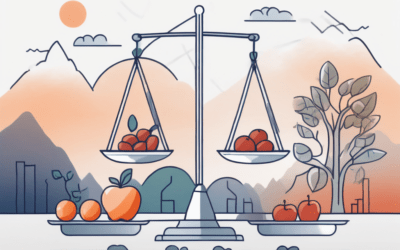In today’s fast-paced and demanding work environments, fostering a culture of gratitude and appreciation is more important than ever. When employees feel valued and appreciated, they are more likely to be motivated, engaged, and productive. In this article, we will explore the importance of gratitude and appreciation in the workplace and provide practical tips on how to lay the foundation for a gratitude-based culture, implement gratitude practices, sustain them, and overcome challenges along the way.
Understanding the Importance of Gratitude and Appreciation
In order to create a culture of gratitude and appreciation in the workplace, it is crucial to understand the impact it has on employee morale and productivity. When employees feel appreciated for their contributions, they are more likely to feel satisfied in their roles and motivated to perform at their best.
Gratitude and appreciation are not just buzzwords; they are essential components of a healthy work environment. By expressing gratitude towards employees, managers and leaders can build trust and strengthen relationships within the team. This, in turn, leads to improved communication, increased loyalty, and a more cohesive work atmosphere.
The Impact of Gratitude on Employee Morale
Gratitude has a powerful effect on employee morale. When employees feel valued, respected, and appreciated, they develop a positive attitude towards their work, their colleagues, and the organization as a whole. This leads to increased job satisfaction, higher employee engagement, and a more positive work environment.
Furthermore, a culture of gratitude can have a ripple effect throughout the organization. When employees experience appreciation, they are more likely to pay it forward and recognize the efforts of their peers. This creates a cycle of positivity and recognition that boosts morale across the board, fostering a supportive and uplifting workplace culture.
The Role of Appreciation in Workplace Productivity
Appreciation plays a crucial role in workplace productivity. When employees are recognized and appreciated for their efforts, it boosts their self-confidence and encourages them to continue performing at a high level. Additionally, a culture of appreciation fosters teamwork, collaboration, and a sense of belonging, all of which contribute to increased productivity and overall organizational success.
Moreover, appreciation goes beyond just acknowledging individual achievements. It also involves recognizing the collective efforts of teams and departments. By celebrating group accomplishments and milestones, organizations can reinforce a sense of unity and shared purpose among employees, driving motivation and productivity to new heights.
Laying the Foundation for a Gratitude-Based Culture
Creating a gratitude-based culture requires laying a solid foundation. This involves setting clear expectations and goals for both individual employees and the organization as a whole, as well as fostering open communication.
Building a gratitude-based culture goes beyond just surface-level practices; it requires a deep-rooted commitment to recognizing and appreciating the efforts of every team member. By setting clear expectations and goals, organizations can provide employees with a roadmap for success. This clarity not only helps employees understand their roles but also empowers them to see how their contributions fit into the bigger picture. When employees have a clear sense of purpose and direction, they are more likely to feel motivated and committed to achieving shared goals.
Setting Clear Expectations and Goals
Clear expectations and goals provide employees with a sense of direction and purpose. Employees who understand what is expected of them and how their work contributes to the organization’s success are more likely to feel motivated and engaged. Regularly communicate expectations and provide feedback to ensure alignment and foster a sense of appreciation for employees’ efforts.
Moreover, setting clear expectations and goals creates a framework for recognizing and celebrating achievements. When milestones are clearly defined, it becomes easier to acknowledge and appreciate the hard work that goes into reaching them. This practice not only cultivates a culture of gratitude but also reinforces the value of each individual’s contributions to the collective success of the team.
Encouraging Open Communication
Open communication is essential for creating a culture of gratitude and appreciation. Encourage employees to share their ideas, concerns, and feedback openly, and ensure that their voices are heard and valued. Actively listen to employees, provide constructive feedback, and show appreciation for their input. This creates a culture of trust, respect, and collaboration.
Furthermore, fostering open communication fosters a sense of psychological safety within the organization. When employees feel comfortable expressing their thoughts and opinions without fear of judgment, it paves the way for authentic connections and meaningful interactions. By creating an environment where every voice is valued and respected, organizations can nurture a culture of gratitude that thrives on mutual understanding and appreciation.
Implementing Gratitude Practices in the Workplace
Once the foundation is set, it is time to implement gratitude practices in the workplace. These practices can range from simple acts of saying ‘thank you’ to establishing a recognition and reward system.
Gratitude in the workplace is not just a feel-good concept; it has tangible benefits for both employees and the organization as a whole. Research has shown that expressing gratitude can lead to increased employee satisfaction, engagement, and productivity. By fostering a culture of gratitude, organizations can create a positive work environment where employees feel motivated and appreciated.
The Power of Saying ‘Thank You’
One of the simplest yet most powerful ways to foster a culture of gratitude is by saying ‘thank you’. Take the time to personally thank employees for their hard work, dedication, and contributions. A sincere thank-you note or a face-to-face expression of appreciation can go a long way in making employees feel valued and appreciated.
In addition to verbal expressions of gratitude, small gestures such as celebrating milestones, work anniversaries, or personal achievements can also make a big impact. These acts of recognition show employees that their efforts are noticed and valued, further reinforcing a culture of appreciation in the workplace.
Creating a Recognition and Rewards System
An effective way to reinforce a culture of gratitude is by implementing a recognition and reward system. This system can involve regular acknowledgment of outstanding performance, peer-to-peer recognition programs, and tangible rewards such as bonuses or incentives. The key is to ensure that recognition is timely, specific, and genuine.
Recognition and rewards should not be limited to top performers; every employee’s contributions should be acknowledged and appreciated. This inclusive approach helps create a sense of unity and teamwork within the organization, fostering a supportive and collaborative work environment. By implementing a comprehensive recognition and rewards system, organizations can boost employee morale, retention, and overall performance.
Sustaining a Culture of Gratitude and Appreciation
Sustaining a culture of gratitude and appreciation requires continuous effort. It is essential to regularly reinforce positive behaviors and evolve gratitude practices to keep them relevant and effective.
Cultivating a culture of gratitude goes beyond mere words; it involves creating a work environment where appreciation is woven into the fabric of daily interactions. This can be achieved by fostering a sense of community and teamwork, where colleagues support and uplift each other, fostering a positive and appreciative atmosphere.
Regularly Reinforcing Positive Behaviors
Consistently reinforce positive behaviors by publicly acknowledging and appreciating employees who embody the values and contribute to the success of the organization. By showcasing and celebrating these behaviors, you not only encourage others to follow suit but also create an environment where appreciation becomes the norm.
In addition to public recognition, providing personalized tokens of appreciation, such as handwritten notes or small gestures tailored to individual preferences, can have a profound impact. These gestures demonstrate that each employee is valued and their contributions are recognized on a personal level, fostering a deeper sense of connection and appreciation.
Continually Evolving Your Gratitude Practices
To ensure that your gratitude practices remain effective, it is important to continually evaluate and evolve them. Seek feedback from employees on what they find most meaningful and consider new ways to show appreciation. Whether it is implementing employee appreciation events or introducing flexible work policies, staying attuned to employees’ needs and preferences is key.
Furthermore, integrating gratitude into the company’s values and mission statement can solidify its importance within the organizational culture. By aligning gratitude with core values, employees are more likely to embrace and embody a culture of appreciation in their daily interactions, leading to increased morale and a stronger sense of belonging.
Overcoming Challenges in Fostering a Gratitude-Based Culture
While fostering a gratitude-based culture has numerous benefits, it is not without its challenges. Overcoming these challenges requires understanding potential resistance to change and addressing concerns about inauthenticity.
Dealing with Resistance to Change
Change can be met with resistance, especially in well-established work environments. Some employees may question the need for a gratitude-based culture or fear that it may disrupt existing routines and structures. To overcome this resistance, clearly communicate the benefits of a gratitude-based culture, provide examples of successful implementations, and involve employees in the process to ensure their buy-in and participation.
Addressing the Potential for Inauthenticity
Skepticism about the authenticity of gratitude and appreciation practices can arise. Employees may question whether recognition is heartfelt or simply a formality. To address this concern, ensure that gratitude and appreciation are practiced genuinely and regularly. Encourage leaders and managers to lead by example and emphasize the importance of sincerity in all gratitude-related efforts.
In conclusion, fostering a culture of gratitude and appreciation in the workplace is essential for employee morale, engagement, and productivity. By understanding the importance of gratitude and appreciation, laying a strong foundation, implementing gratitude practices, sustaining them, and addressing potential challenges, organizations can create a positive work environment where employees feel valued and appreciated for their contributions. Start today by saying ‘thank you’ and watch as the culture of gratitude grows.



